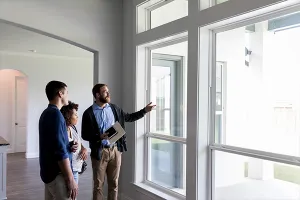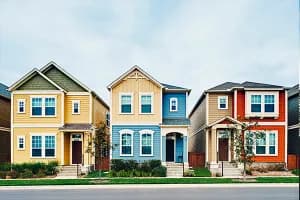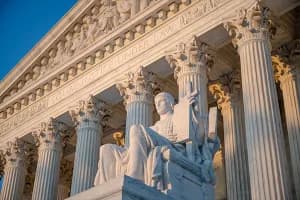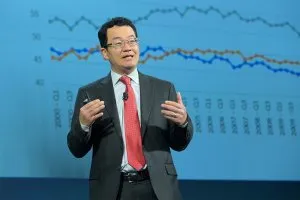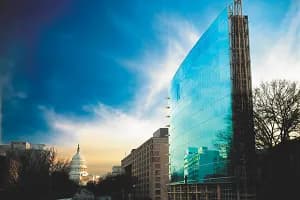While location is still the top driver when it comes to real estate transactions, green features that help to fight climate change as well as save money are swaying home owners when it comes to purchasing a house.
It’s no surprise, then, that state and local REALTOR® associations have decided to build environmentally sensitive spaces as they outgrow old ones. With interest rates at an all-time low and readily available labor, REALTORS® are deciding now is the time to build green.
The Northern Virginia Association of REALTORS® (NVAR) broke ground on its new 24,000-square-foot building on May 4 and expects to occupy it by June 2010, said association chief executive Christine Todd.
The group decided to build LEED-rated space. Developed by the United States Green Building Council, LEED provides a framework for building green.
LEED, the acronym for Leadership in Energy and Environmental Design, is one of a handful of third-party standards. It is considered the definitive stamp of approval in the green architecture movement. NVAR’s Todd said it “was a no brainer,” to build a LEED-certified building. “We would have been criticized if we had not built to LEED standards,” she said.
The association started discussing whether to build a new headquarters back in 2001 when the group had to decide whether to refurbish its existing building, tear the building down and rebuild or build a new facility. In 2004, the association decided to sell its land and build at a new location.
That’s the same year that the National Association of REALTORS® unveiled its new corporate building in Washington, D.C., which is certified LEED Silver. The NAR building was the first privately owned LEED certified building in the city.
Todd said her group was wowed by what the NAR had accomplished. “We were very much inspired by the NAR building,” she said.
The Northern Virginia building is a $13-million capital investment, but the association will carry a $2-million mortgage. It took advantage of historically low interest rates and tapped into a willing labor market to construct the building.
The association initially was shooting for LEED Silver certification but Todd noted that it is close to earning enough credit to take its building to the next level, LEED Gold.
“We are shooting for Gold but if we get the Silver, well, we’ll take that as well,” she said.
Like other LEED-certified buildings, the ventilation, heating and cooling systems are efficient and environmentally friendly.
There are special windows that reduce the penetration of heat while allowing in the light and the building is located near a Metro rail stop, making commuting by transit an attractive option.
For those who don’t use mass transit, there is shared parking with the adjacent project, reducing the impact caused by on-grade parking. There also is underground parking which has a landscaped plaza level. There are reserved parking spots for REALTORS®, agents and guests who drive hybrid vehicles or fuel efficient vehicles.
There are LEED guidelines for commercial buildings, new construction, schools and neighborhood designs. Points are awarded in five program areas: sustainable site development, water savings, energy savings, energy efficiency, and material selection and indoor environmental quality.
The NAR building in Washington, D.C., also inspired the Alabama Association of REALTORS® to build a LEED Silver-rated workspace, said executive vice president J. Danny Cooper. A picture of the NAR office has hung on the walls in Montgomery and “was a drumbeat for us. It kept us heading in the right direction.”
The association broke ground on the building September 17, and it will be the first LEED-certified building in Montgomery. It is located directly across the street from the Capitol and surrounding complex and just blocks from the Alabama Department of Archives of History and the National Civil Rights Memorial, designed by Maya Lin, who designed the Vietnam Memorial in Washington, D.C.
Cooper said each year every fifth grader in Alabama public schools comes to Montgomery. He wants to make his LEED Silver building part of the must-see landmarks on the fifth graders’ field trip.
“They are all going to want to come in,” said Cooper, who predicted the glass facade and modern look of the building will lure them and their parents into the space. “It will be a showplace.”
Cooper is excited about the LEED process and highlights the benchmarks his association has met, such as recycling materials and using as many local products as possible. “Anything we can do to conserve natural resources and make the best use of all the things we use moves us forward,” he said.
Similar to the NVAR, the Alabama association has been able to take advantage of available construction labor and lower interest rates. REALTORS® did agree to a $36 additional membership fee to help fund the $6 million building.
“Our members are very excited about this building,” Cooper said.
While Alabama, Tennessee and Northern Virginia associations all decided they wanted to build LEED-certified spaces, the Tennessee Association of REALTORS® (TAR) had to change their building plans at the last minute. Building material costs ran higher than budgeted when TAR started building in 2006 said TAR Executive Vice President Steve Harding.
Harding said the 13,000-square-foot building, which sits on a half-acre lot in Nashville, was designed to meet the LEED Gold standards for new construction. But the association scrapped plans for certification because Hurricane Katrina led to increased costs for lumber, plywood and other building materials in the Southeastern United States.
Regardless, the building was so well designed and planned that its utilities run about the same as the building it replaced which was less than half its size.
The association was also successful in lowering a city storm water tax. The tax is based on the amount of surface runoff commercial spaces contribute to the city’s storm sewer system. The building has several features to mitigate runoff. It has front and rear bioswales, filled with native bog plants that filter and detain the water that falls on the building’s roof and parking lot. The parking is made with permeable concrete so that rain water flows through its surface and is diverted into the rear bioswale to help prevent polluted water from being fed into local streams, rivers and lakes. A tour of the property, which uses only rainwater for irrigation, led the city engineers to cut the storm water tax by nearly half.
Skeptical at first, the storm water engineers used a water hose to test the ability of the parking lot to drain water into the soil below its hard surface. “We passed the test,” Harding says, jokingly noting that by the end of the tour the city officials had learned quite a bit.
The TAR headquarters also uses geothermal earth-coupling for heating and cooling. This system utilizes a 2 1/2-mile ground-loop that flows through a series of 21 wells drilled 300 feet down below the building’s parking lot. The building has low-flow plumbing fixtures and dual flush toilets. High-performance glass allows a lot of natural light into the building and high ceilings, combined with ceiling fans, make for very comfortable spaces in which to work.
Harding said TAR may try to achieve LEED certification after it adds a third floor, which was in the original design, but delayed. The additional floor would be surrounded by a visible green roof and also boast supplemental power with a solar photovoltaic panel system.
While he’s proud of the accomplishments, Harding said what was considered state of the art a handful of years ago is almost commonplace today.
“It is no longer cutting edge,” Harding said of automated energy and lighting features. “The technology is out there for anybody to do most of this, even as retrofit.”
At times, he said, TAR battled with the city permitting department because some of the features it wanted to include in the building weren’t specified in the local codes. “But now, some of the things we pioneered, we are seeing in construction throughout the city.”
NAR Smart Growth Grants Help Fund Green Efforts
The National Association of REALTORS® is increasing the amount of money available to associations that promote sustainable green growth, and subsequently, a greener and cleaner economy.
A NAR grant program that was once targeted exclusively to promote smart growth initiatives has been expanded to include programs that help member REALTOR® associations encourage green building in their communities. Green building is becoming more attractive across the country especially as a way to encourage energy independence.
Until the change in policy there were no dedicated grants to green programs, said Hugh Morris, AICP, LEED AP and smart growth representative at NAR. The NAR has $120,000 available annually in grants for green and smart growth initiatives.
Some REALTORS® associations across the country are already taking advantage of the green grant and are using it in ways to get the word out about green building in their communities.
In California, the San Luis Obispo Association of REALTORS® used the money to help fund an ECOEXPO. While it didn’t offer the NAR green certification course it did provide agents the opportunity to earn continuing education credits, said Executive Director Lisa Smith. Although the course was tailored to REALTORS®, Smith said the topic proved so interesting that some attorneys and bankers actually paid to sit in on the course.
It wasn’t all academic, though, and the ECOEXPO highlighted 30-plus vendors from the area, including landscape architects, architects and contractors who specialize in the installation of solar energy panels — an attractive option in this sunny, central coast area of the state that is located midway between San Francisco and Los Angeles.
Wares featured at the expo ran the gamut, from hybrid cars and motorcycles to artificial turf that needs no watering. Children played with magical Shrinky Dinks that were melted through solar ovens while adults checked out the vendors.
There also were two bus tours highlighting some of the better green initiatives around town — including two remodeled homes and a multi-family unit.
“We had a little bit of everything for everybody,” said Smith, adding that some vendors already have contacted her to get details about next year.
Kevin Habuer taught the continuing education course but also was an organizer of the ECOEXPO as well as a vendor.
Habuer is a loan officer with the Mortgage House, a West Coast-based mortgage banker that offers energy-efficient loans. Habuer offers energy-efficient mortgages for home owners who are willing to either incorporate green features into a remodeled home or build a new home that meets Energy Star or LEED standards. LEED was developed by the United States Green Building Council and provides a concise framework for the design, construction and operations of a building.
Energy Star means it meets the requirements laid out by the Environmental Protection Agency and Department of Energy. Habuer’s firm offers a deal where homes that are built to LEED, or other regional green standards, can qualify for a 1 point discount on the mortgage.
While there has been a move afoot in commercial development to build green, Habuer said the interest is beginning to gain momentum in the residential market. Habuer said that people may want to build green homes but that they don’t always have the vision it takes to see it all through.
“The biggest issue now is showing people how,” Habuer said, adding that events like the ECOEXPO where lenders, architects, contractors and others were brought together will help bring green options forward. Habuer said the goal is to “make the options and solutions available to people.”
Proceeds will be used to help pay for newspaper advertising promoting the San Luis Obispo Association of REALTORS’® week-long campaign to collect used electronics. Smith said the group opens its doors the week after Christmas and residents are encouraged to drop off any old computer, cell phone or television they have. Last year three long-bed trucks hauled off what the association collected during its week-long drive.
